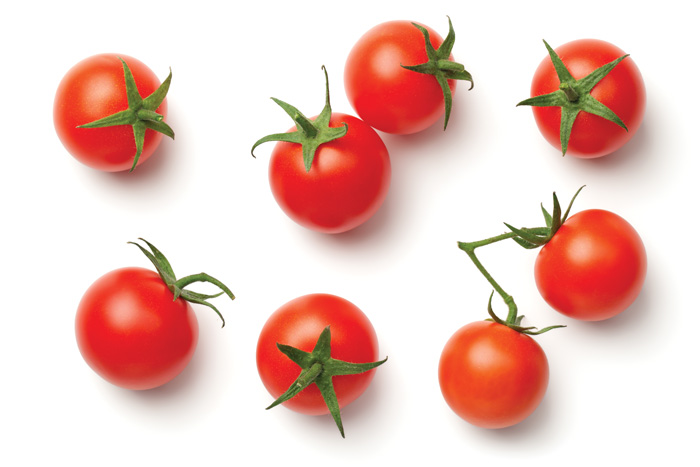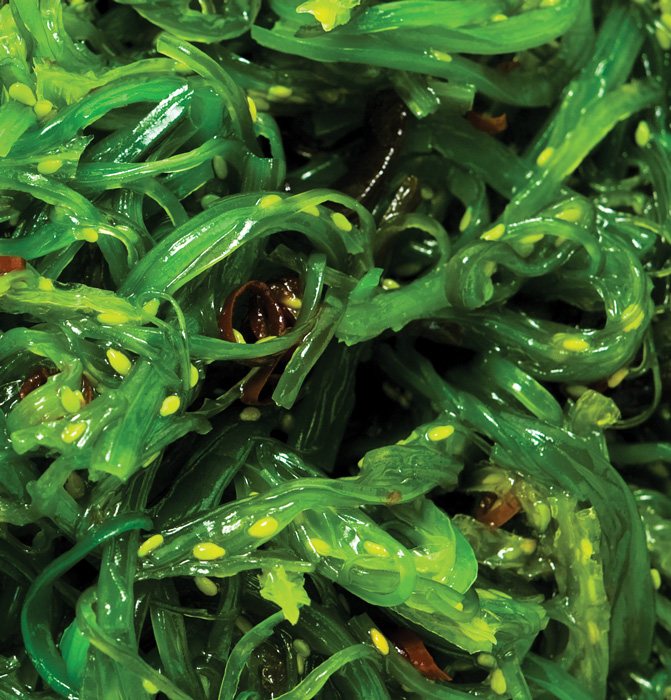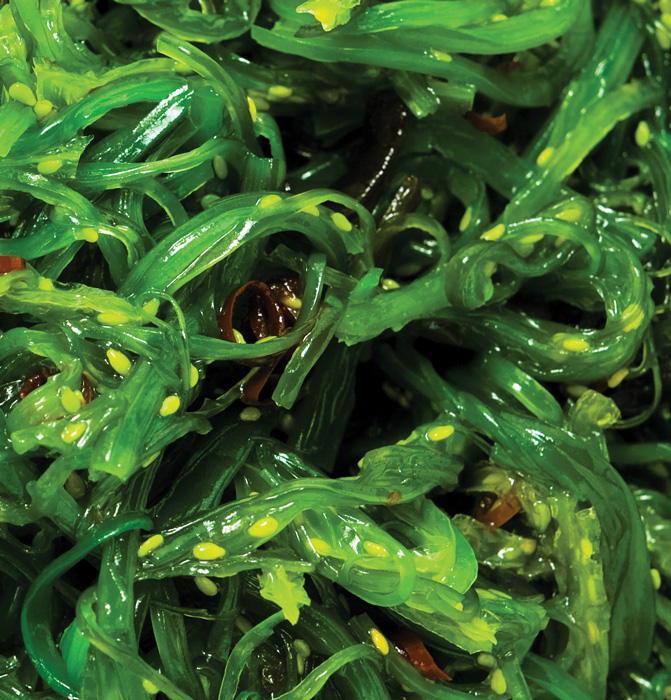Believer Meats Poised for U.S. Expansion, Seaweed as Food and Fuel
OMNIVORE
STARTUPS
Believer Meats poised for U.S. expansion
Israel-based cultivated meat startup Future Meat Technologies has changed its name to Believer Meats, marking a rebrand of the company, which broke ground late last year for a large production facility in Wilson, N.C.
Founded in 2018 by Yaakov Nahmias, the company opened its first cultivated meat production line in Israel in 2021, using animal cells without genetic modification.
“People are biologically conditioned to crave meat, but the conventional ways meat gets made today make it difficult to feel good about eating it,” said Nicole Johnson-Hoffman, CEO of Believer Meats, in a press release. “Our company rebranding to Believer embodies the course we’ve charted to build a better future of meat production.”
Believer Meats received significant Series B funding in 2022. The company’s investors include ADM, Emerald Technology, Bits x Bites, Cibus Fund, Tyson Foods, and Menora Mivtachim.
In addition to the rebrand, Believer Meats is working toward a commercial launch in the United States in 2023, pending regulatory approval. The company’s growth agenda calls for it to use its lines of animal cells to expand its cultured meat selections, including cultivated chicken, lamb, beef, and pork.
FOOD SECURITY
Rural Americans support initiatives to address hunger
More than half of rural American consumers reported being worried about having enough food to feed themselves and their families, according to a national survey from the Save the Children Action Network (SCAN).
SCAN is a political advocacy organization founded in 2014 that focuses on issues critical to children’s lives in the United States, including early childhood education and child hunger. The survey was conducted in November 2022 and included 1,006 registered voters from counties considered “mostly rural” or “completely rural” on the U.S. census. Of the respondents, 72% reported living in a rural community and 28% reported living in a small town.
When asked about the biggest problems facing families in rural areas, respondents said that high prices and inflation caused the most concern. The top concern was gas prices at 23%, followed by general inflation at 18%, and food and grocery prices at 15%. Additionally, 84% of respondents reported changing their eating patterns due to increasing grocery costs. And more than three-quarters (77%) of parents surveyed said they are concerned about their ability to afford enough food.
SCAN’s survey also asked respondents which measures and programs they would support or oppose in order to address food access. The most popular solutions are simplifying the retailer application process for farmers markets and bolstering food programs through food pantries or school sites. Additionally, rural voters across the political spectrum reported strong support for government action to address food insecurity.<
CONSUMERS
New pizza priorities
Toppings such as mushrooms and ranch dressing are adorning more pizzas in the United States, according to Slice’s Slice of the Union report. Slice, an online technology platform, provides tools and resources to its members in the pizza space, with over 19,000 pizzerias currently using its services. Its annual report gives insight to flavor trends, purchasing patterns, and price variation around the United States.
In 2022, mushrooms were the number one topping, with an increase of 8.9% in orders. Also popular was ranch dressing, with 9.7% more orders with ranch last year. Pineapple was projected to perform well in 2022, but instead decreased in sales. There were 6.1% fewer pineapple orders in 2022, compared with a 76% increase the previous year.
The report also gives two trend predictions for the coming year: Roman-style pizza and pickle pizza. Roman pizzas feature a thin, focaccia-like crust and sauce and toppings spreading to the edges. Pickle pizza first came on the scene in 2018 and has quickly gained popularity. This new creation features a garlic-based sauce, mozzarella cheese, and dill pickles.
RESEARCH
Studying cherry tomatoes
Researchers from the Virginia Tech Department of Food Science and Technology and the School of Plant and Environmental Sciences are initiating a study on the flavor and shelf life of field-grown and indoor-grown cherry tomatoes.
Through this study, researchers will analyze samples from both local, conventional growers and indoor agricultural growers in Virginia to compare their shelf lives and flavors. This will include liquid chromatography and gas chromatography-mass spectrometry coupled with olfactory detection.
Virginia Tech Assistant Professor of Food Science Yun Yin said that while indoor growing could increase the shelf life of cherry tomatoes compared with those grown outdoors, there is a key difference: flavor.
“One preliminary result is that currently indoor [tomatoes] are likely to be less flavorful, but they have a longer shelf life,” she explained in an interview with Food Technology. “So we can study this and provide consumers with different targeted requirements.”
Cherry tomatoes are growing in popularity among consumers due to their health benefits and ease of consumption. Additionally, Virginia tomatoes make up a multimillion-dollar market, boosting the state economy.
“This is a more popular snack compared to traditional tomatoes, and they are a very healthy snack,” Yin said. “Cherry tomatoes have boosting vitamins, lots of phytochemicals, and a lot of minerals as well. And a lot of times they will fulfill either the fruit or vegetable section of the dietary guidance.”
ENVIRONMENT
Seaweed as food and fuel
An expansion of global seaweed farming could help alleviate food security and biodiversity loss concerns, according to a new study from the University of Queensland. The research was published in Nature Sustainability.
Using the global Biosphere Management Model, researchers mapped potential areas for seaweed farming of 34 species and estimated the environmental benefits. These benefits were measured by land-use changes, greenhouse gas emissions, water and fertilizer use, and projected changes in species present.
“Seaweed has great commercial and environmental potential as a nutritious food and a building block for commercial products, including animal feed, plastics, fibers, diesel, and ethanol,” said PhD candidate Scott Spillias in a press release. “Our study found that expanding seaweed farming could help reduce demand for terrestrial crops and reduce global agricultural greenhouse gas emissions by up to 2.6 billion tons of CO2-equivalent per year.”
The researchers also identified several exclusive economic zones (EEZs), or areas where a state has special rights to marine resources, which could be used as potential farming locations. The largest EEZ found was in Indonesia, with up to 114 million hectares suitable for seaweed farming.
In Memoriam
IFT notes the passing of Frank Orthoefer and John A. Siregar.












